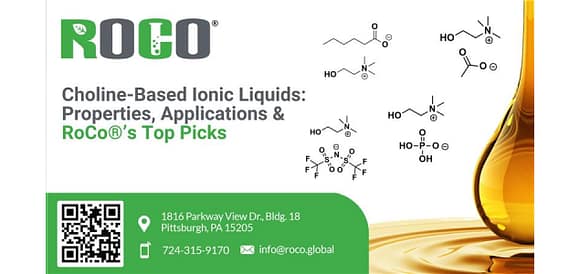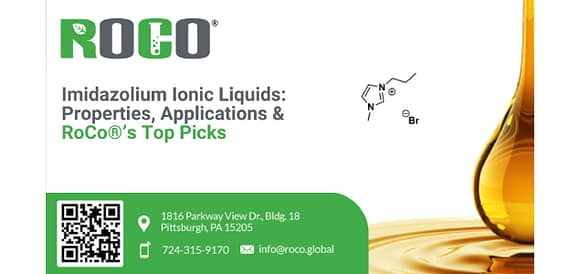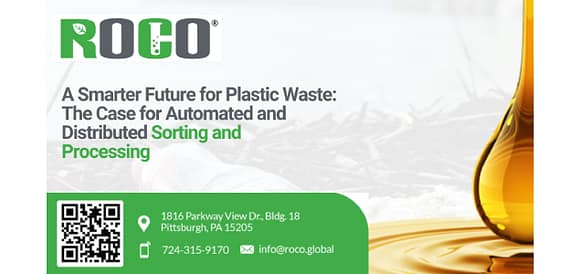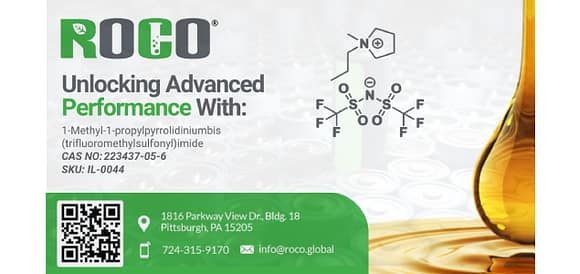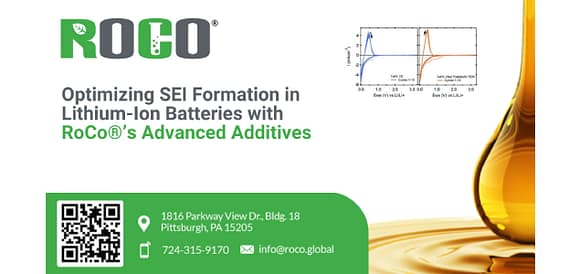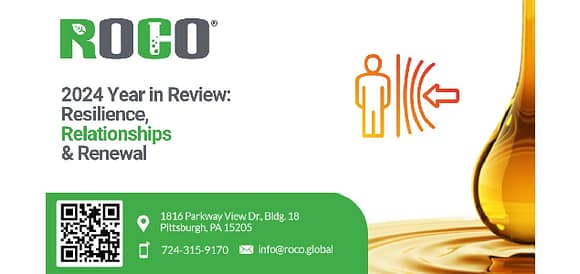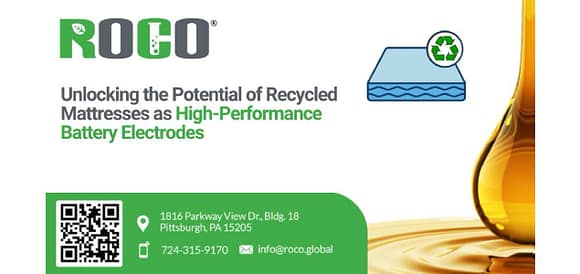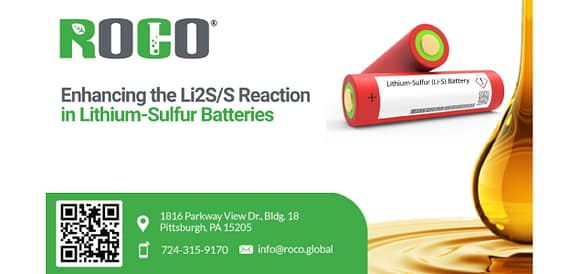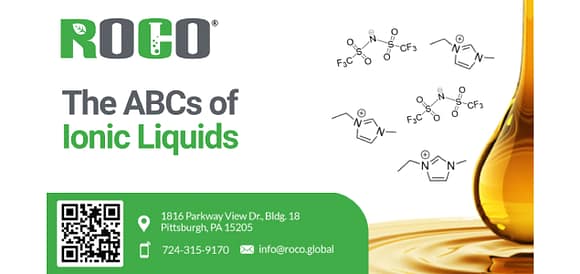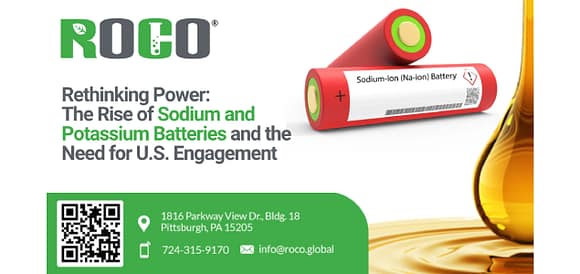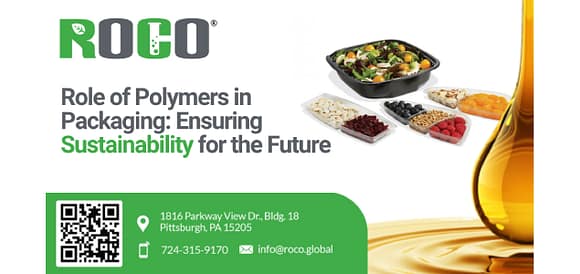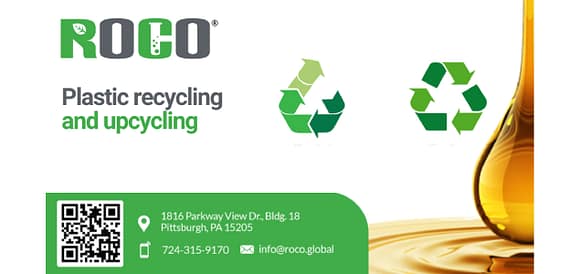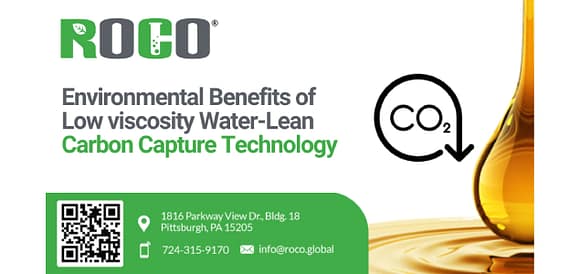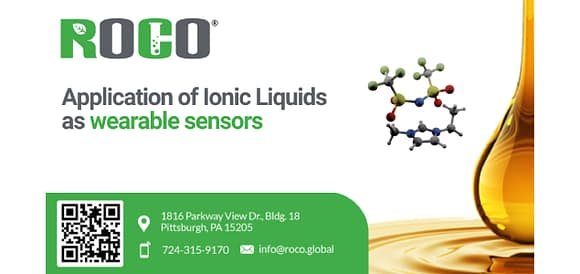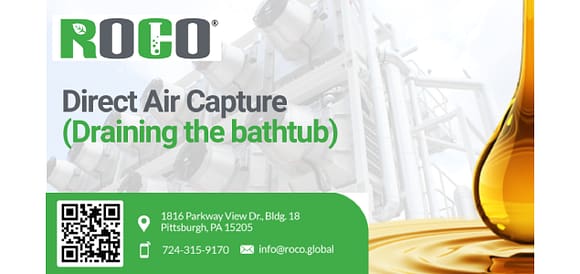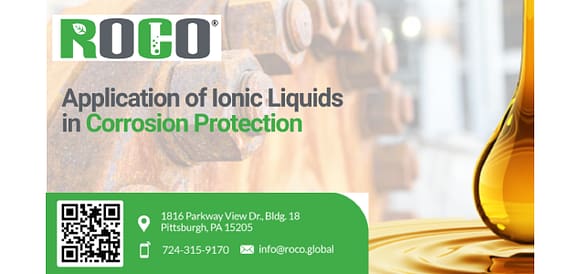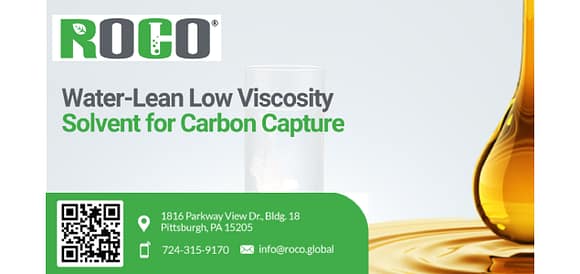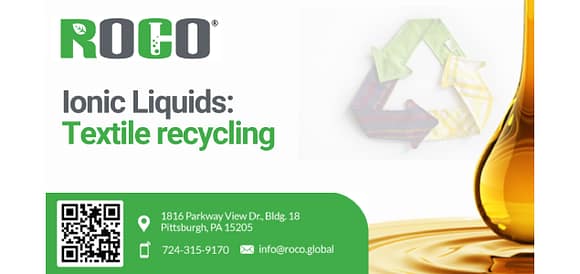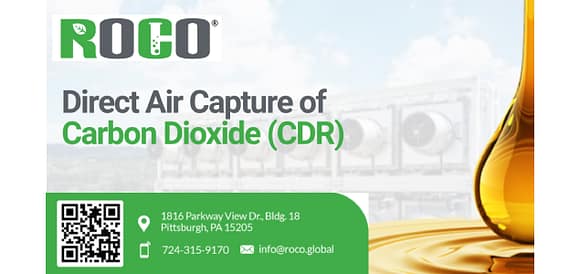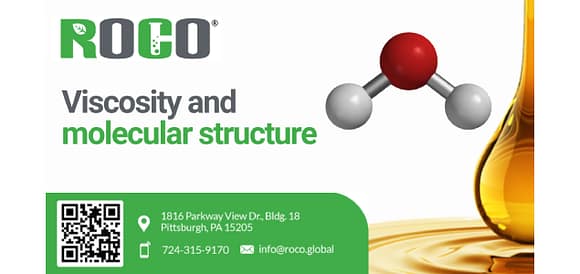Choline-Based Ionic Liquids: Biocompatibility Meets Performance
Choline-based ionic liquids are redefining the balance between biocompatibility and high performance. As a biologically essential compound, choline offers unique advantages for sustainable chemistry, enabling safer and more efficient applications in fields ranging from CO₂ capture to advanced material design.
Imidazolium Ionic Liquids: Properties, Applications & RoCo®’s Top Picks
midazolium ionic liquids deliver thermal stability, tunable properties, and low environmental impact—ideal for catalysis, electrochemistry, biomass processing, and CO₂ capture in sustainable research and industry.
How to Determine Viscosity from Chemical Formulas in Ionic Liquids
onic liquids are versatile salts with tunable properties. This blog shows how to estimate their viscosity from chemical formulas by analyzing ion size, structure, and interactions—simplifying research and design.
RoCo® Spins Off Singularity Polymers to Revolutionize Material Science with Ionic Liquid Technology
RoCo® announces the spin-off of Singularity Polymers, pioneering material science with advanced ionic liquid technology to enable next-generation polymers for energy, sustainability, and industrial innovation.
Ionic Liquids: Transforming the U.S. Market with Sustainable Innovation
Ionic liquids are emerging as eco-friendly, high-performance alternatives to traditional solvents. Discover how they’re driving sustainable innovation and transforming the U.S. market with versatile applications.
A Smarter Future for Plastic Waste: The Case for Automated and Distributed Sorting and Processing
It’s no secret that plastic waste is a massive problem in the United States. Each year, we generate over 40 million tons of plastic waste—yet, according to a 2022 Greenpeace report, less than 6% of it is ever recycled into something new.
Unlocking Advanced Performance with 1-Methyl-1-propylpyrrolidinium bis(trifluoromethylsulfonyl)imide [CAS NO: 223437-05-6]
The need for innovative solutions in energy storage and sustainable chemistry, ionic liquids have emerged as the go to…
Optimizing SEI Formation in Lithium-Ion Batteries with RoCo®’s Advanced Additives
Lithium-ion batteries are foundational to the global transition toward electrification, powering everything from smartphones and…
Reflections Year 2024 Resilience Relationships Renewal
As the CEO of RoCo, a small research company focused on ionic liquids of just four dedicated individuals, this holiday season offers the perfect moment to pause and reflect…
Structured Liquids (Ionic Liquids): Applications from Polymer Recycling to Corrosion Prevention (Part 1)
Ionic liquids have transformative potential across industries, particularly in green solvents and liquid electrolytes development. Our advances in polymer composites and ionic liquids have been…
Unlocking the Potential of Recycled Mattresses as High-Performance Battery Electrodes
If you develop battery technology, the Mattress Recycling Council (MRC), together with RoCo®, is looking for battery researchers and manufacturers interested in decreasing their carbon footprint in energy storage devices and incorporating state-of-the-art electrolytes and battery salts.
Enhancing the Li2S/S Reaction in Lithium-Sulfur Batteries
Lithium-sulfur (Li-S) batteries have emerged as promising candidates for next-generation energy storage systems due to their high specific energy capacity and energy density. However, challenges such as sulfur’s insulating nature and the large volume change of S/Li2S during discharge/charge processes hinder the full utilization of sulfur in Li-S batteries.
The ABCs of Ionic Liquids
From Additives to Zwitterions, ionic liquids (ILs) offer diverse solutions for a greener world. Explore their potential in Batteries, Corrosion inhibition, Desalination, Energy storage, and as Green solvents. RoCo® is at the forefront, developing customizable ILs for a sustainable tomorrow.
Rethinking Power: The Rise of Sodium and Potassium Batteries and the Need for U.S. Engagement
Lithium-ion batteries have long been the standard for energy storage, powering a vast array of devices from smartphones to electric vehicles and the electric grid. However, lithium’s limited availability and exorbitant cost are causing significant concerns in the supply chain.
Role of Polymers in Packaging: Ensuring Sustainability for the Future
Packaging materials are essential to our daily lives, from the plastic bags we use at the grocery store to the tetra packs that hold our favorite drinks. The development of polymers has revolutionized packaging materials, making it possible for food to have a longer shelf life and enabling us to handle and store necessary and unnecessary items efficiently.
Polymer Upcycling is a Solution to Circular Economy
The concept of a circular economy involves designing products and systems to minimize waste and maximize the use of resources, to create a closed-loop system in which waste is eliminated or repurposed into new products.
Plastic recycling and upcycling
For decades, we have been hearing about recycling, especially plastics. Education on recycling for most of us in our 40s started in elementary school, with programs, ads, etc., promoting its benefits and how you can help mitigate the effects of climate change.
Environmental Benefits of Low viscosity Water-Lean Carbon Capture Technology
Climate change is the biggest challenge facing humanity. The global implications are already becoming clear with an increase in wildfires in the Northwest United States..
Application of Ionic Liquids as wearable sensors
Ionic liquids (ILs) are conductive liquids with no or little vapor pressure. ILs form dynamic structures within the liquid state, and these structures exist within an equilibrium at a specific condition. As the conditions change, either by exposure…
Direct Air Capture (Draining the bathtub)
Team Carbon Blade is pioneering carbon capture and storage solution that provides stand-alone, small-footprint “Blade” (Direct Air Capture (DAC)) modules that combine wind-powered electrodialysis with bipolar membrane separation (EDBM) to remove…
Application of Ionic Liquids in Corrosion Protection
According to the National Association of Corrosion Engineers, the global cost of corrosion is estimated to be 3.4% (or $2.5 trillion) of global GDP. These costs typically exclude aspects such as individual safety or environmental consequences. Typical corrosion protection coatings are sacrificial (coating with a second metal, e.g., zinc) or barrier polymer coating,..
Water-Lean Low Viscosity Solvent for Carbon Capture
Carbon abatement is needed to mitigate the threat of climate change. It is a new area for innovation and investment for future economic development. Scientists, corporations, and governments around the world are stepping up to develop and support technologies which reduce the cost of decarbonizing the economy.
Ionic Liquids: Textile recycling
Fast fashion’s impact is undeniable: massive water waste & GHG emissions. Less than 15% of textiles are recycled, largely due to polymer blends. RoCo is committed to a circular solution, leveraging ionic liquids to selectively separate fibers like cellulose and PET, paving the way for true textile upcycling.
Direct Air Capture of Carbon Dioxide (CDR)
The climate of our planet has always changed and fluctuated. However, industrialization has expelled copious amounts of carbon dioxide into the atmosphere, triggering climate change and global warming. This warming has resulted in a dramatic rise in Earth’s temperature over a short period of time. If left unchecked, we will certainly face disaster.
Viscosity and molecular structure
Viscosity is resistance to flow in liquids. Factors affecting viscosity are the temperature and shape of the molecule. Higher temperatures correspond to higher average kinetic energies and faster-moving molecules which leads to lower viscosity.

